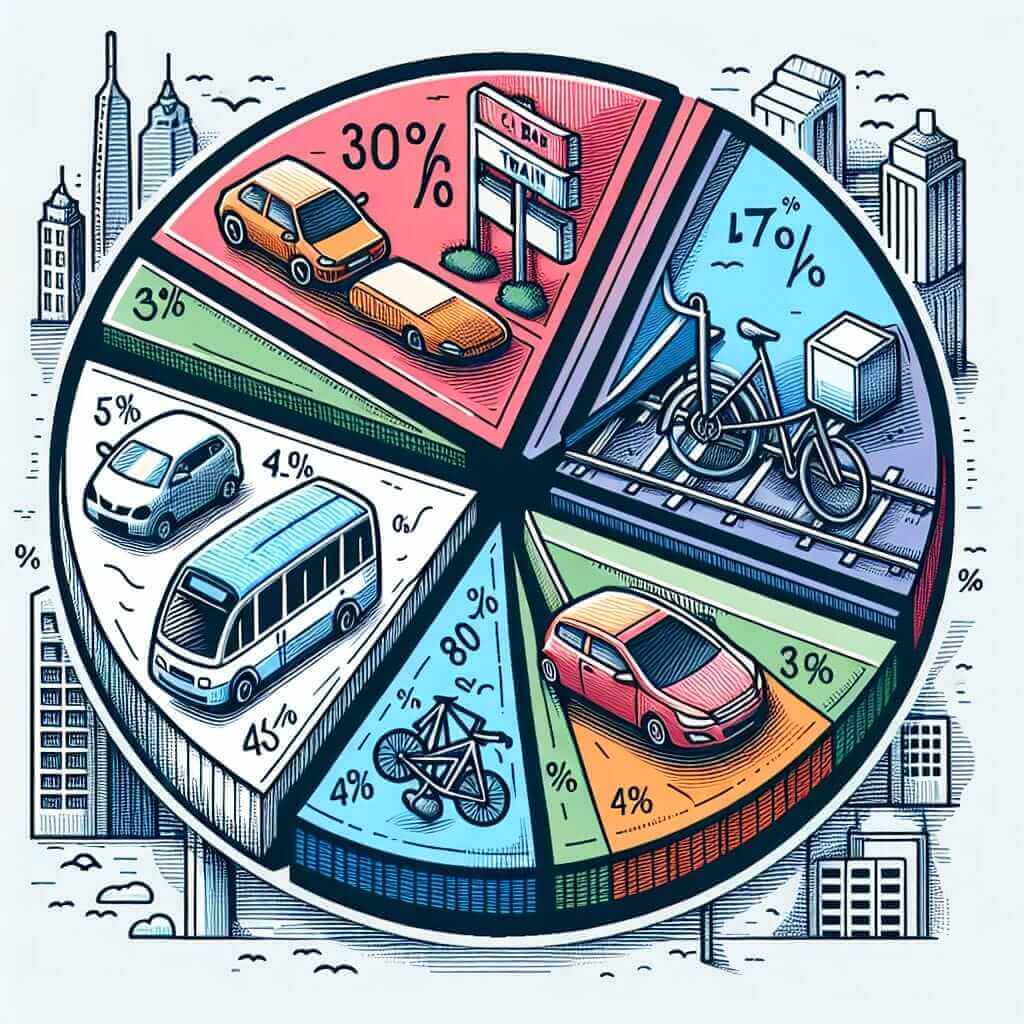Introduction: The Importance of Pie Chart Description in IELTS
The IELTS Academic Writing Task 1 often presents visual data requiring accurate and concise descriptions. Among these, pie charts pose a unique challenge: conveying information represented by segments of circles. Your ability to effectively describe three pie charts not only demonstrates your data interpretation skills but also showcases your command of English vocabulary and grammar. This comprehensive guide will equip you with the tools and strategies needed to excel in this specific task.
Understanding Pie Charts and Their Purpose
Pie charts are visual representations of data using a circle divided into slices. Each slice represents a category, and its size corresponds to its proportion of the whole. When confronted with three pie charts, your task is to identify trends, compare and contrast data, and draw meaningful conclusions.

How to Describe 3 Pie Charts in IELTS
Describing three pie charts effectively requires a structured approach and a keen eye for detail. Follow these steps:
1. Analyze the Charts:
- Identify the main topic: What is the overall theme connecting the three charts?
- Examine the categories: What does each slice in the pie chart represent? Are the categories consistent across the three charts?
- Analyze proportions: What are the significant differences and similarities in the proportions represented by each slice?
2. Organize Your Response:
- Introduction (Paraphrase): Start by paraphrasing the information given in the chart title and axes labels.
- Overview (Key Features): Identify the most striking trends or patterns evident across the three charts.
- Detailed Description: Provide a detailed comparison and contrast of the data presented in each chart. Focus on significant differences and similarities, using specific data points to support your observations.
3. Use Linking Words and Phrases:
Employ a range of cohesive devices to ensure your description is fluent and easy to follow.
- Comparison: Similarly, likewise, in the same way, compared to, in contrast, whereas, while.
- Contrast: However, on the other hand, despite, although, even though, conversely.
- Trend Description: Increasingly, gradually, steadily, sharply, dramatically, significantly.
4. Incorporate Data Effectively:
- Use a variety of grammatical structures to present data:
- Fractions and percentages: “A quarter of…”, “Half the respondents…”, “25% of the population…”
- Proportions: “The largest proportion…”, “The smallest segment…”, “A significant minority…”
- Approximations: “Approximately…”, “Just over…”, “Slightly less than…”
5. Example from IELTS Practice Materials:
Let’s analyze an example from official IELTS practice materials:
(Insert three pie charts showing the modes of transport used by people traveling to work in three different cities.)
Sample Response:
The three pie charts illustrate the preferred modes of transportation used by commuters in London, Tokyo, and New York City.
Overview: Overall, it is evident that private car usage dominates in Los Angeles, while public transportation is more prevalent in both London and Tokyo.
Detailed Description: In London, public transportation emerges as the most popular choice, with the underground accounting for the largest proportion at 45%, followed by buses at 30%. Private car usage remains relatively low at 20%. Conversely, Los Angeles reveals a contrasting trend. Private cars are the dominant mode of transport, comprising a significant 60% of commuters. Public transportation lags behind at 30%, with buses slightly more popular than the subway. Tokyo presents a more balanced picture. While private cars still hold a significant share at 40%, public transportation usage is equally substantial. Trains constitute the most preferred option at 35%, followed by buses at 25%.
Tips for Success:
- Practice regularly: Familiarize yourself with various pie chart types and practice describing them accurately.
- Develop your vocabulary: Expand your range of synonyms for common words like “increase,” “decrease,” and “proportion.”
- Time management: Allocate approximately 20 minutes for Task 1, ensuring you have sufficient time to analyze, plan, and write your response.
- Proofread carefully: Check your grammar, spelling, and punctuation to ensure clarity and accuracy.
Conclusion:
Mastering the art of describing three pie charts in IELTS Writing Task 1 is an achievable goal with focused practice and a strategic approach. By following the steps outlined in this guide, you can enhance your data interpretation skills and present a coherent, well-structured response that showcases your English language proficiency. Remember, confidence comes with practice, so embrace every opportunity to analyze and describe visual data.